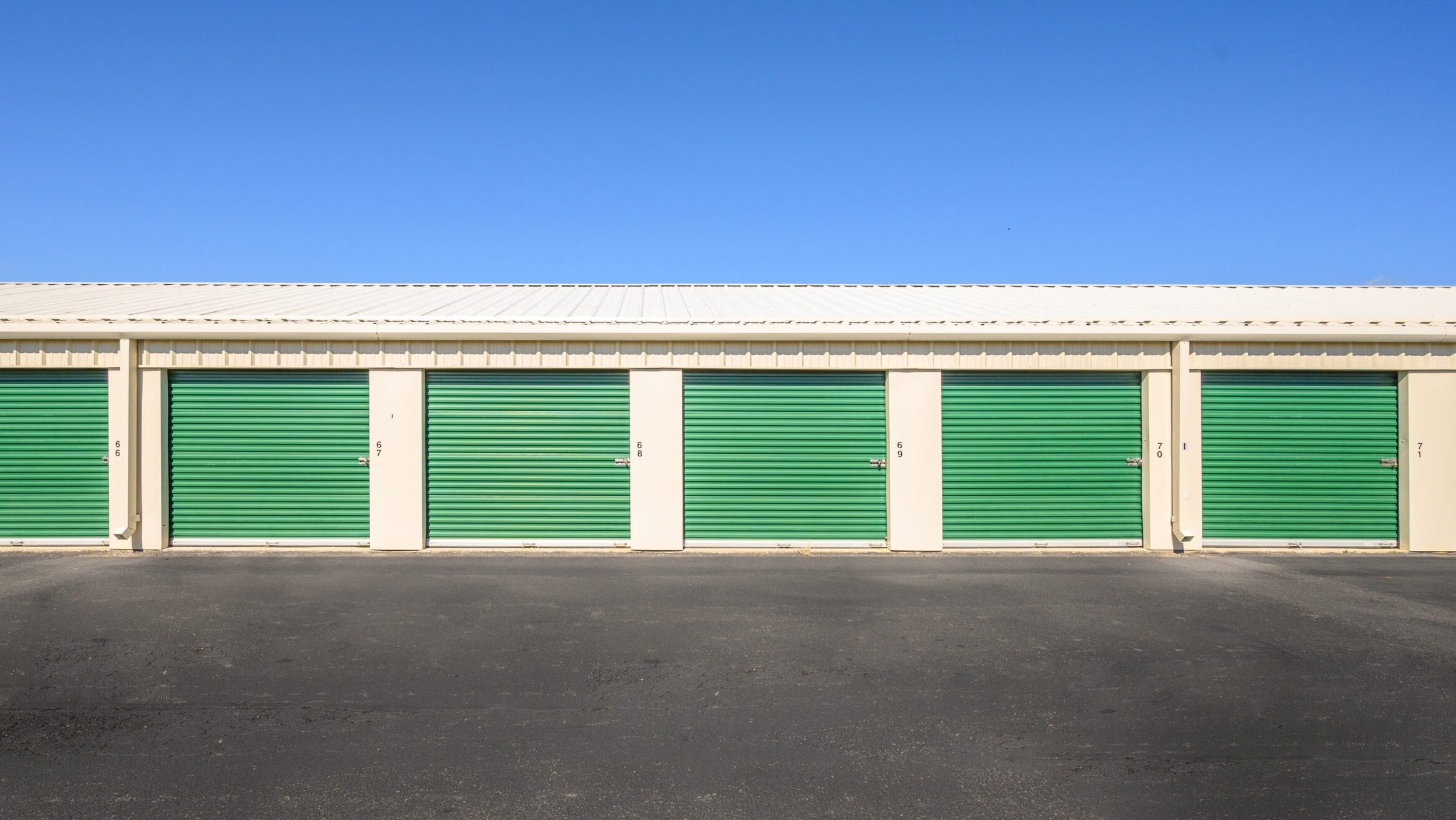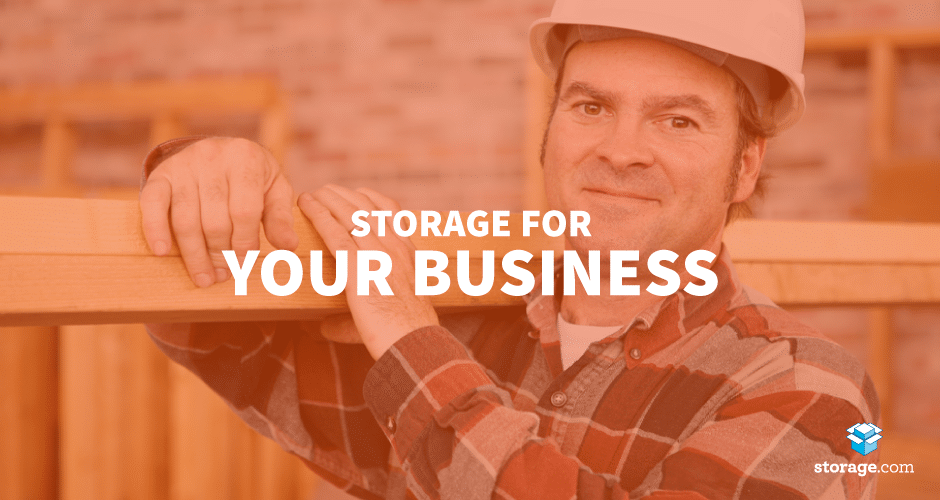Article takeaways
- Proper storage protects heavy construction equipment from damage, theft, and costly repairs.
- Choosing between on-site and off-site equipment storage depends on security, accessibility, and budget.
- The right construction storage strategy keeps equipment in top condition and ready for use.
Introduction
Proper storage of heavy construction equipment is essential for maintaining its value and operational efficiency. These machines represent significant investments, and improper storage can lead to costly repairs. Exposure to weather conditions such as rain, snow, extreme temperatures, and humidity can cause rapid deterioration, leading to rust, hydraulic system failures, and electronic malfunctions. Storing your equipment without adequate security measures can also make equipment vulnerable to theft and vandalism—adding further financial risks for contractors and business owners.
This comprehensive guide addresses the essential aspects of construction equipment storage, including security measures, damage prevention, and cost-effective solutions. Whether managing an extensive fleet of heavy machinery or a few key pieces of equipment, secure storage ensures that each asset remains in peak condition.
Heavy Construction Equipment Storage Needs & Requirements
Selecting the right storage solution for construction equipment involves evaluating multiple factors to ensure longevity. Contractors and business owners needing extra storage must assess equipment type, frequency of use, storage duration, and financial considerations. The location and environmental conditions surrounding the storage area can influence equipment maintenance needs and long-term usability.
Assessing Equipment Storage Requirements
When determining the best storage solution for construction equipment, you need to evaluate equipment size, how long you’ll need storage, whether or not you’ll need security for your stored equipment, and whether or not you’ll need indoor storage to protect your equipment from the elements. Budget, maintenance, and logistical considerations should also be considered when determining whether on-site or off-site storage is the best option.
Key factors to consider when developing your heavy construction equipment storage strategy include:
1. Equipment Inventory and Size
- Large Equipment Requirements: Heavy machinery such as bulldozers require reinforced flooring and adequate spacing between units to prevent contact damage—and to prevent your equipment from falling through the floor or creating a sinkhole.
- Specialized Equipment Storage: Concrete mixers and drilling equipment require climate-controlled environments to protect hydraulic systems and electronic components.
- Height and Clearance Specifications: Make sure your storage options have enough height clearance to accommodate equipment such as tower cranes and other vertical machinery.
- Security Measures: Implementation of comprehensive security systems, including gated access, surveillance cameras, and GPS tracking devices for high-value equipment protection should also be considered.
2. Frequency of Equipment Use
- Regularly Used Equipment: Frequently utilized machinery should be stored in easily accessible locations to minimize downtime and optimize operational efficiency.
- Seasonal or Project-Specific Storage: Equipment not in active use can be stored in secure, enclosed facilities to protect against environmental factors and unauthorized access.
3. Storage Duration
- Short-term storage solutions should prioritize weather protection to prevent damage during brief periods of inactivity.
- Long-term storage requires climate-controlled environments and regular maintenance to ensure equipment remains in optimal condition.
4. Budget and Cost Considerations
While cost is an important factor, it’s important to allocate sufficient resources for secure storage solutions.
5. Location and Accessibility
Strategic storage location selection, such as proximity to job sites, can minimize transportation costs and improve operational efficiency. Additionally, consider the impact of local climate conditions when choosing storage solutions.
Evaluating Construction Equipment Storage Options

Finding the right storage solution for construction equipment isn’t just about choosing a space—it’s about balancing security, accessibility, and cost while keeping equipment in peak condition. Some contractors prefer the convenience of on-site storage, while others opt for off-site facilities that offer enhanced protection and maintenance services. Deciding between indoor and outdoor storage depends on budget, climate, and the level of protection needed to prevent wear and tear.
On-Site Storage Advantages
On-site storage offers the convenience of easy access to equipment, reducing logistical challenges. However, implementing robust security measures, such as perimeter fencing and surveillance systems, is an additional expense for the jobsite to prevent unauthorized access and theft of on-site storage.
Temporary Storage Structures and Containers
Temporary storage options, like shipping containers, portable metal shelters, and modular storage units, provide a cost-effective way to protect construction equipment from environmental exposure and security threats. While these storage options offer convenience and flexibility, they often lack insulation and temperature regulation, making it essential to take additional precautions to preserve equipment integrity from temperature fluctuations.
Shipping containers are popular for their durability and security, and they can be customized with shelving, pegboards, and reinforced racks for better organization. Insulation and ventilation systems can help control temperature and moisture levels, reducing the risk of rust and corrosion. Adding lighting, power outlets, and enhanced locking mechanisms can further improve security and usability.
Portable metal shelters and modular storage units provide more flexibility for job sites that require temporary protection for heavy machinery. These structures can be relocated as needed and often feature roll-up doors or open-sided designs for easy access. However, they may require additional anchoring and weatherproofing to withstand extreme conditions.
Dedicated Equipment Yards
Open spaces designated for heavy machinery storage should have reinforced surfaces to prevent ground deterioration and minimize tire damage.
Off-Site Storage Benefits
Off-site storage facilities offer expanded storage capacity and enhanced security and maintenance options, making them ideal for contractors with limited on-site space. Open off-site storage spaces specifically designed for heavy machinery should be created with durability and functionality in mind. Reinforced surfaces, such as compacted gravel, concrete, or asphalt, help prevent ground deterioration and ensure that heavy machinery remains stable without sinking or developing tire damage.
These yards should also include proper drainage systems to prevent water accumulation, which can lead to erosion and hazardous working conditions. Off-site storage spaces should have designated entry and exit points with wide turning areas to improve maneuverability for large vehicles, while strategically placed lighting and security fencing enhance safety and protect against unauthorized access.
Self-Storage Facilities for Construction Equipment
Self-storage units provide flexibility for contractors with changing storage needs, offering various unit sizes and climate-control options.
Dedicated Heavy Equipment Storage Facilities
Specialized storage facilities offer expert management and maintenance services to ensure stored equipment remains in optimal condition.
Cost-Benefit Analysis of Storage Solutions
Indoor Storage: Pros and Cons
Pros:
- Weather Protection: Shields equipment from extreme temperatures, moisture, and UV exposure, preventing rust and component deterioration.
- Security: Enclosed facilities reduce the risk of theft and vandalism with controlled access, surveillance systems, and alarmed entry points.
- Extended Equipment Lifespan: Reduces wear and tear by protecting sensitive electronic components, hydraulic systems, and tires from environmental factors.
- Insurance Benefits: Some insurers offer lower premiums for equipment stored in secure, enclosed spaces, lowering long-term costs.
Cons:
- Higher Cost: Indoor storage facilities often come with significant rental fees, making them a larger financial commitment than outdoor options.
- Space Limitations: Large equipment may require specialized warehouse storage, limiting availability or increasing costs for oversized machinery.
- Access Restrictions: Some indoor facilities may have limited operating hours, creating potential delays in equipment retrieval.
Outdoor Storage: Pros and Cons
Pros:
- Cost-Effective: Typically more affordable than indoor storage, making it a budget-friendly option for contractors managing multiple pieces of equipment.
- Easy Access: Equipment can be stored close to job sites for quick deployment, minimizing downtime and transportation costs.
- Scalability: Outdoor storage yards can accommodate large fleets without the constraints of enclosed structures.
Cons:
- Exposure to Weather: Equipment left outdoors is vulnerable to rain, snow, and extreme heat, accelerating rust formation and material degradation.
- Security Concerns: Open storage areas are more susceptible to theft and vandalism unless additional security measures, such as fencing, lighting, and surveillance, are in place.
- Increased Maintenance Needs: Regular inspections and protective measures, such as applying rust inhibitors and using heavy-duty covers, are required to minimize environmental damage.
The Advantages of Self-Storage and Vehicle Storage for Construction Equipment
Self-storage and vehicle storage solutions offer adaptable options for contractors with diverse equipment storage needs. These facilities provide secure, purpose-built spaces for storing machinery of various sizes, from forklifts to oversized vehicles. Convenient features such as 24/7 surveillance, flexible leasing terms, and climate control make self-storage an attractive choice for many construction professionals.
Specialized Vehicle Storage Benefits
Dedicated storage spaces for large vehicles like bulldozers, backhoes, and dump trucks ensure these assets are protected with appropriate security measures and storage conditions.
Self-Storage Advantages for Contractors
Self-storage facilities offer contractors the flexibility to scale their storage needs as their business grows without the long-term commitment of permanent structures. Secure, reinforced units provide peace of mind and protection for valuable equipment.
Choosing the Right Storage Unit Size for Construction Equipment
Selecting the right storage unit size is essential for keeping construction equipment secure, organized, and easily accessible. Construction companies need to consider equipment dimensions, storage requirements, and operational efficiency when deciding on a unit. Below is a breakdown of common storage unit sizes and what they can accommodate.
Common Business and Commercial Storage Unit Size and Use Cheat Sheet
The table below provides a breakdown of common storage unit sizes, what they can accommodate, and their average price range to help contractors make an informed decision.
Construction Storage Units
| Storage Unit Size | What Type of Equipment Fits? | Best Use for Construction & Contractors | Average Price Range |
|---|---|---|---|
| 10×10 | Small tools, generators, power equipment, toolboxes | Ideal for small contractors storing hand tools and spare parts | $50 – $150 per month |
| 10×20 | Compact skid steers, small forklifts, scaffolding, ladders | Great for project-based machinery storage, including caterpillar storage, and material staging | $150 – $300 per month |
| 10×30 | Mini excavators, standard forklifts, workbenches, shelving | Secure off-site storage for mid-sized machinery and equipment | $300 – $500 per month |
| 20×40 | Backhoes, trenchers, palletized materials, safety equipment | Best for managing multiple job sites and rotating equipment | $500 – $1,000 per month |
| Warehouse (Custom) | Bulldozers, telehandlers, large excavators, fleet management | Long-term storage, fleet management, and maintenance access | Varies ($1,000+ per month based on size & features) |
| 10×15 (Special) | Medium tools, portable compressors, welding equipment | Good for specialized contractors with unique tool requirements | $100 – $200 per month |
| 15×20 | Small to medium machinery, cable reels, pipe storage | Suitable for electrical and plumbing contractors | $200 – $350 per month |
| 15×30 | Bobcats, small loaders, multiple material pallets | Effective for landscaping contractors and material suppliers | $350 – $600 per month |
Note: Scroll horizontally and vertically to view all content. Table height is fixed to demonstrate vertical scrolling.
Equipment-Specific Storage Recommendations

Tailored storage solutions for specific types of construction equipment can help extend machinery life and maintain optimal performance.
- Caterpillar Storage: Climate-controlled storage and enhanced security measures protect sensitive electronic components and hydraulic systems in Caterpillar equipment.
- Forklift Storage: Stable, level flooring prevents tire damage and ensures the safe, efficient operation of forklifts.
- Attachment Storage: Organized, dedicated spaces for attachments and accessories minimize the risk of damage and loss.
Value-Added Services for Optimal Equipment Storage
Enhance the value of your storage solution by selecting facilities that offer additional services tailored to construction storage and equipment management. Many storage providers offer on-site maintenance options, ensuring that machinery remains in peak condition with routine servicing, battery upkeep, and fluid level checks.
Equipped work areas within machinery storage facilities allow contractors to perform minor repairs, lubrication, or adjustments without the need to transport equipment elsewhere. Transportation partnerships can simplify logistics, with some facilities offering equipment pickup and delivery services, allowing contractors to move machinery seamlessly between job sites and storage locations.
Maintenance Access
Some storage facilities offer a range of maintenance services to ensure equipment remains in peak condition throughout storage periods. These services often include routine battery checks, fluid level monitoring, and scheduled system diagnostics to prevent mechanical failures.
Some facilities even provide on-site maintenance bays where contractors can conduct minor repairs, lubricate moving parts, and perform engine startups to keep machinery in working order. Additionally, premium storage providers may offer preventative maintenance programs that include rust-proofing, tire rotation, and electrical system inspections to mitigate long-term damage.
Equipment Pickup and Delivery
Many storage facilities offer comprehensive logistics services to help contractors efficiently transport their heavy equipment between job sites and machinery storage locations. These services can include on-demand pickup and delivery, fleet coordination, and secure transport options designed to prevent damage during transit.
Some high-end facilities even provide specialized hauling equipment to handle oversized machinery, ensuring safe and compliant transport. Self-storage units, warehouse-style facilities, and dedicated heavy equipment yards are among the types of machinery storage providers that commonly offer these transportation services, making it easier for contractors to manage their fleets without logistical headaches.
Selecting the Optimal Construction Storage Solution
Protecting your investment in construction equipment requires careful consideration of machinery storage options that align with your specific needs and priorities. Whether opting for the flexibility of self-storage or the enhanced security of dedicated equipment yards, a well-planned storage strategy is essential for maintaining equipment value and minimizing operational disruptions.
Making the Right Choice for Your Construction Equipment Storage
Effective construction storage involves a thoughtful assessment of factors such as equipment type, vehicle storage, usage frequency, budget, and location. By carefully evaluating storage options and implementing appropriate security measures, contractors can safeguard their valuable assets, reduce maintenance costs, and ensure optimal equipment performance.
Partnering with reputable storage providers, such as Storage.com, grants access to a wide range of solutions tailored to the unique needs of construction professionals. Take proactive steps to protect your equipment investment and maintain a competitive edge in the industry.
Self-storage facilities offer a flexible, secure, and cost-effective solution for storing construction equipment. Whether you need short-term project storage or long-term protection, choosing the right facility can help extend the lifespan of your equipment and reduce maintenance expenses.
Explore Storage.com’s commercial and business storage options to find the best solution for your business.






